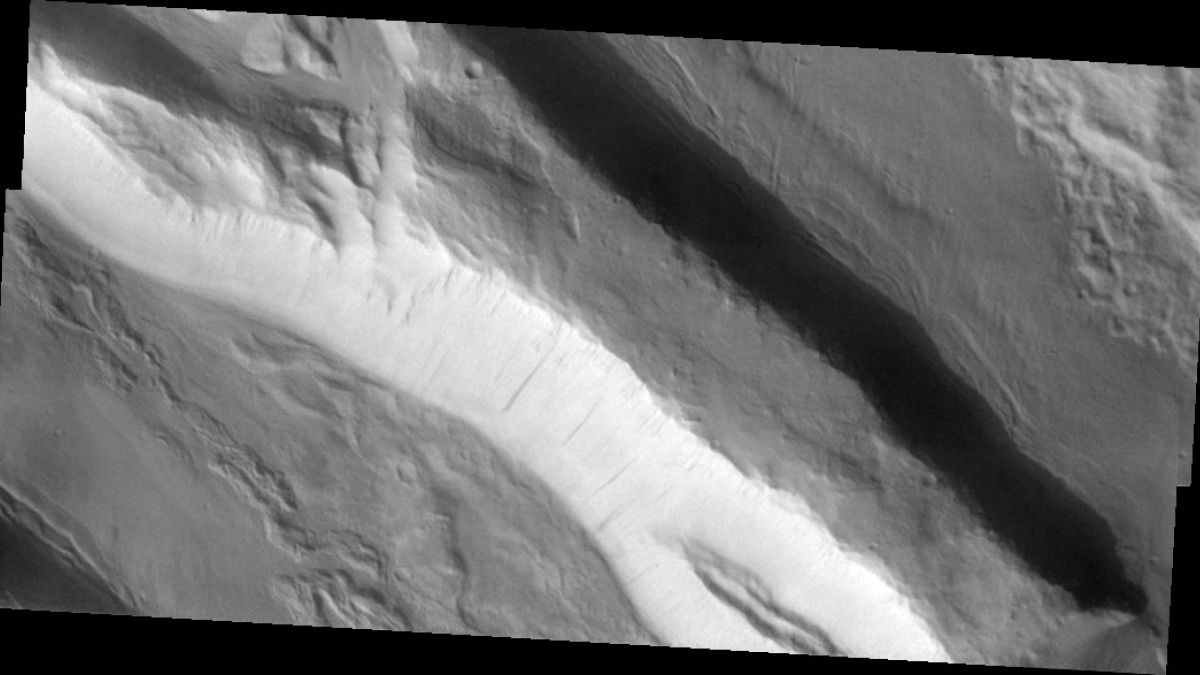ASU Mars camera celebrates a decade's discoveries

Ten years ago, on Feb. 19, 2002, the Thermal Emission Imaging System (THEMIS), a multi-band camera on NASA's Mars Odyssey orbiter, began scientific operations at the Red Planet. Since then the camera has circled Mars nearly 45,000 times and taken more than half a million images at infrared and visible wavelengths.
"THEMIS has proven itself a workhorse," says Philip Christensen, the camera's designer and principal investigator. Christensen is a Regents' Professor in the School of Earth and Space Exploration, part of Arizona State University's College of Liberal Arts and Sciences. "It's especially gratifying to me to see the range of discoveries that have been made using this instrument."
Highlights of science results by THEMIS over the past 10 years include:
• confirming that hematite is widespread on Meridiani Planum, which led NASA to send one of its Mars Exploration Rovers there
• discovering CO2 gas jets at the south polar ice cap in spring
• discovering chloride salt deposits across the planet
• making the best global image map of Mars ever done
• identifying safe landing sites for NASA's Mars Phoenix spacecraft by finding the locations with the fewest hazardous boulders
• monitoring dust activity in the Martian atmosphere
• discovering that a large impact crater, Aram Chaos, once contained a lake
• discovering that Mars has more water-carved channels than previously thought
• discovering dacite on Mars, a more evolved form of volcanic lava not previously known on the Red Planet
THEMIS combines a 5-wavelength visual imaging system with a 9-wavelength infrared imaging system. By comparing daytime and nighttime infrared images of an given area, scientists can determine many of the physical properties of the rocks and soils on the ground.
Mars Odyssey has a two-hour orbit that is nearly “Sun-synchronous,” meaning that Odyssey passes over the same part of Mars at roughly the same local time each day. In September 2008 its orbit was shifted toward an earlier time of day, which enhanced THEMIS' mineralogical detection capability.
Says Christensen, "Both Odyssey and THEMIS are in excellent health and we look forward to years more science with them."
NASA launched the Mars Odyssey spacecraft April 7, 2001, and it arrived at Mars Oct. 24, 2001. On arrival the spacecraft spent several months in a technique called aerobraking, which involved dipping into the Martian atmosphere to adjust its orbit. In February 2002, science operations began.
The Mars Odyssey project is managed by the Jet Propulsion Laboratory, a division of the California Institute of Technology, Pasadena, for NASA's Science Mission Directorate, Washington. Lockheed Martin Space Systems in Denver built the spacecraft, and JPL and Lockheed Martin collaborate on operating it.